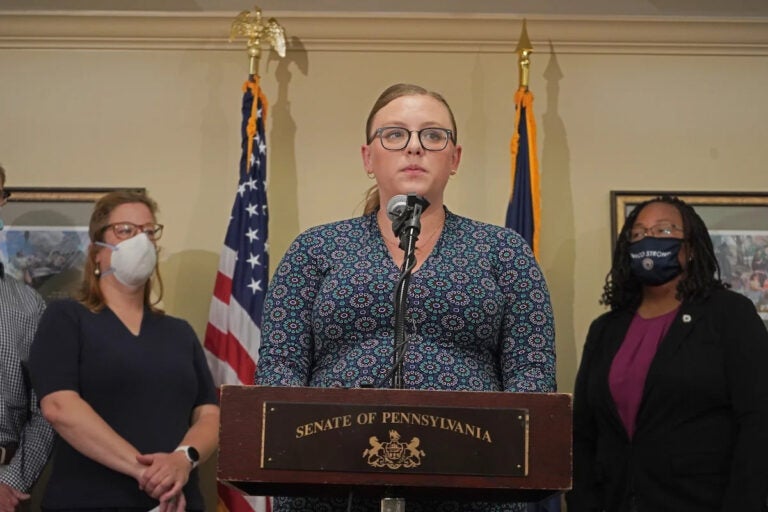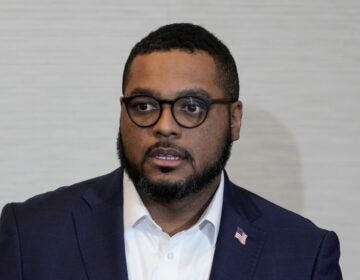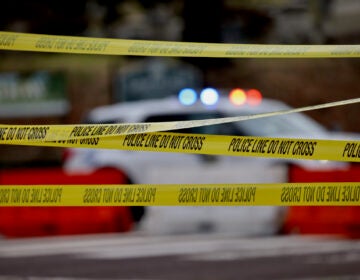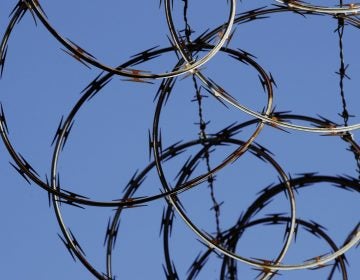Pa. legislators push for Extreme Risk Protection Orders to prevent firearm suicides
Extreme Risk Protection Order laws, active in 21 states and Washington D.C., show promise in mitigating suicide and mass violence risks.
Listen 1:18
Pennsylvania State Rep. Jennifer O'Mara. (Kenny Cooper/WHYY)
From Philly and the Pa. suburbs to South Jersey and Delaware, what would you like WHYY News to cover? Let us know!
They’re calling it the silent crisis: The growing number of gun suicides in Pennsylvania.
For Rep. Jennifer O’Mara (D-Delaware County), it’s a personal issue.
Feb. 2, 2025, marked 22 years since her father, a Philadelphia firefighter of 25 years and proud father of four, died by suicide with a gun. He had significant mental health challenges, largely from traumatic experiences on the job, which went untreated. O’Mara says she’s committed to preventing families from going through similar tragedies.
“Sadly, too many Pennsylvanians’ lives are ended each year from firearms. While homicides are widely publicized, more Pennsylvanians die by the hidden tragedy of suicide,” O’Mara told WHYY News.
State data shows that, of the 1,941 firearm-related fatalities in the commonwealth in 2022, 55% were suicides.
“Furthermore, gun suicide affects every corner of our great state. From rural to urban and suburban areas, no region, county, or community is immune from this travesty, as my family knows all too well,” O’Mara added.
To honor her father’s memory, O’Mara plans to reintroduce a bill establishing Extreme Risk Protection Orders. These court orders can temporarily block individuals from possessing or purchasing guns if a judge deems them a threat to themselves or others. Family members or law enforcement can petition a judge to remove firearms from someone in crisis.
Right now, 21 states and Washington, D.C. have ERPO laws. Early research suggests they help reduce suicide and may prevent mass violence. The Johns Hopkins Center for Gun Violence Solutions has released a model policy guide outlining best practices to ensure these laws work effectively.
Tim Carey, a law and policy advisor who helped draft national ERPO legislation, says the orders are temporary, ranging from a few weeks to a year, with possible extensions, if needed. They target times of urgent risk when access to a firearm can lead to irreversible harm.
“We were worried, but we didn’t know what to do, and this tool is designed to give people action in these times of crisis, to avoid these foreseeable harms from happening,” Carey said.
He notes that ERPOs are modeled after temporary restraining orders, similar to domestic violence protective orders already used in every state and the District of Columbia.
Carey also points to strong evidence from Indiana and Connecticut, which adapted older laws into modern ERPO frameworks and have seen promising results in preventing firearm suicides.
“So analysis of ERPO petitions from across six different states where the law exists found that at least 10% of the petitions were related to risks of violence against three or more people,” Carey said. “That would qualify as mass shootings if perpetrated, with K-12 schools being the most common target.”
A California study found that when credible mass shooting threats led to ERPOs, there were no subsequent homicides or suicides linked to those individuals — suggesting the intervention can be a significant preventive measure.
In Pennsylvania, gun suicide attempts have a 90-95% fatality rate, far exceeding the single-digit lethality of most other methods. CeaseFirePA notes that nearly 60% of firearm fatalities in the state are suicides, a statistic that often gets overshadowed by silence and stigma.
Firearm Suicide Fact Sheet 2024-25 by WHYY News Digital on Scribd
Rural counties see suicide rates up to three times higher than urban areas, with families and communities struggling to access resources. Firearms in the home significantly increase the risk of suicide for everyone in the household, due to their lethality and the impulsive nature of many crises.
Dr. Jay Breneman, director of Firearm Suicide Prevention Policy at CeaseFirePA and a Stoneleigh Fellow, told WHYY that rising gun ownership across various demographics — including women and younger individuals — coincides with increased suicide attempts.
“We’re starting to see an increase in folks talking about lethal means, but we’re still a long way away, just because of the taboo around talking about firearms and the lack of familiarity with talking about firearms in the context of suicide,” Breneman said. “Awareness drives, but that’s mostly all happening at the local level, and so it varies dramatically from community to community. There really is no new ground.”

Get daily updates from WHYY News!
WHYY is your source for fact-based, in-depth journalism and information. As a nonprofit organization, we rely on financial support from readers like you. Please give today.





